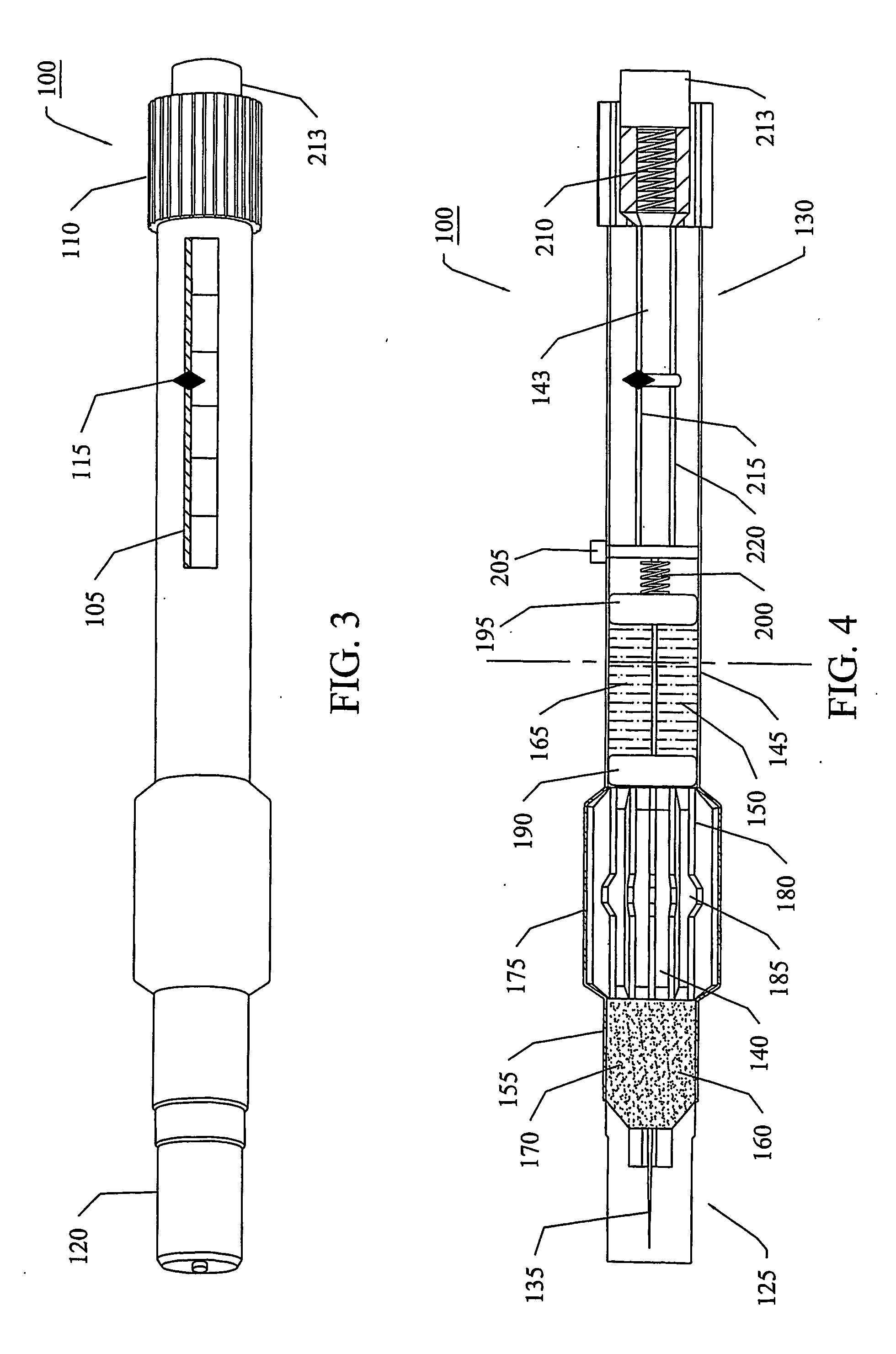Auto-injection devices and methods for intramuscular administration of medications
- Summary
- Abstract
- Description
- Claims
- Application Information
AI Technical Summary
Benefits of technology
Problems solved by technology
Method used
Image
Examples
example 1
Liquid Medicaments
[0042] As illustrated in FIG. 1, an auto-injection device 1 in accordance with the present invention is provided. The device 1 has non-volumetric indicia 5 that correspond to medication dosages based on an individual's relevant parameters. The appropriate dosage, which can be adjusted continuously or discretely, are marked on a non-volumetric scale (i.e., Broselow-Luten tape) affixed to the housing of the device 1. By rotating an adjustment knob 10 around its longitudinal axis, a user can select the appropriate dose of medication to be administered and / or needle penetration depth based on the patient's relevant parameters. A movable indicator 15 displays to the user a representation of the relevant parameter and appropriate dosage amount to be administered using the subject device 1. The movable indicator 15 corresponds in movement to that of the adjustment knob 10. A needle protector 20 is provided to protect the user from accidental needle punctures.
[0043] In t...
example 2
Solid / Solvent Medicament Mixtures
[0051] Another embodiment of the subject invention provides an auto-injection device for dispensing dry or unstable medications that require reconstitution prior to administration to a patient. The auto-injection device, as described in U.S. Pat. Nos. 5,971,953 5,393,326; 4,983,164; 4,413,991; 4,202,314; and 4,214,584, may be modified consistent with the teachings provided herein for use according to the subject invention.
[0052] According to the subject invention, the auto-injection device has a dosage adjusting means, and / or a needle depth adjusting means, an adjustment mechanism, and a reconstitution mechanism. The reconstitution mechanism has two chambers created and separated by a dividing piston that includes upper and lower plungers. Distally, the lower plunger seals the upper or liquid chamber. The lower or dry drug chamber can be separated from the diluent liquid by an internal hydrophobic membrane that allows air but not water to pass thro...
PUM
 Login to View More
Login to View More Abstract
Description
Claims
Application Information
 Login to View More
Login to View More - R&D
- Intellectual Property
- Life Sciences
- Materials
- Tech Scout
- Unparalleled Data Quality
- Higher Quality Content
- 60% Fewer Hallucinations
Browse by: Latest US Patents, China's latest patents, Technical Efficacy Thesaurus, Application Domain, Technology Topic, Popular Technical Reports.
© 2025 PatSnap. All rights reserved.Legal|Privacy policy|Modern Slavery Act Transparency Statement|Sitemap|About US| Contact US: help@patsnap.com



